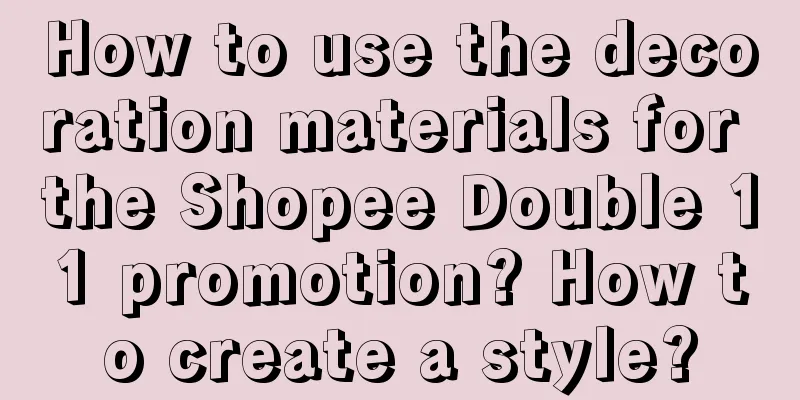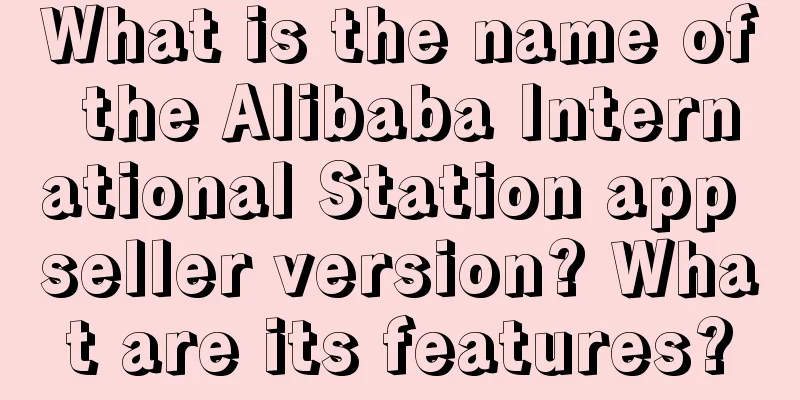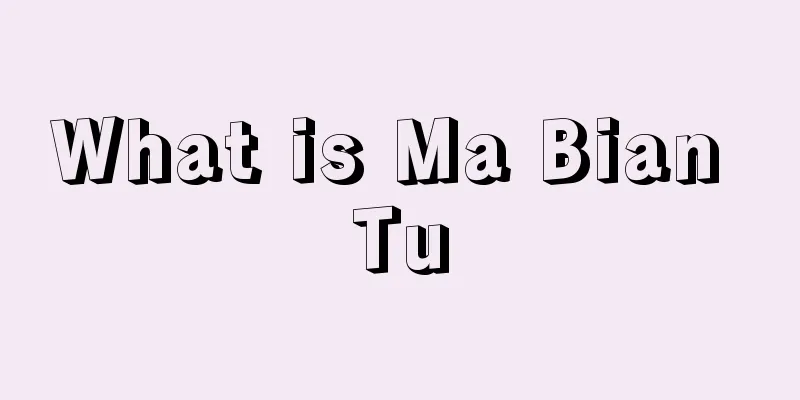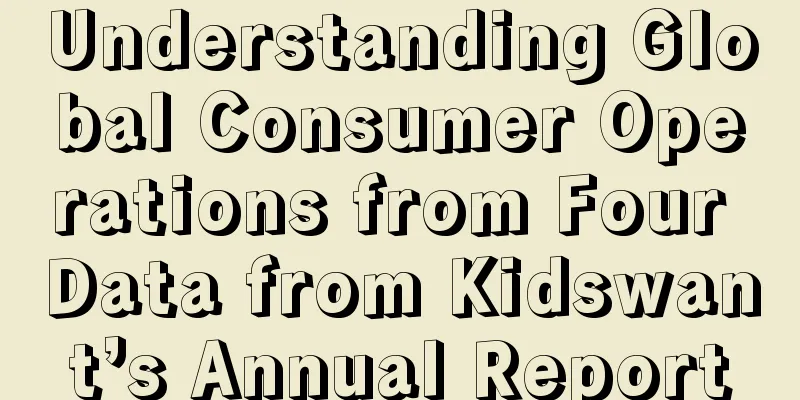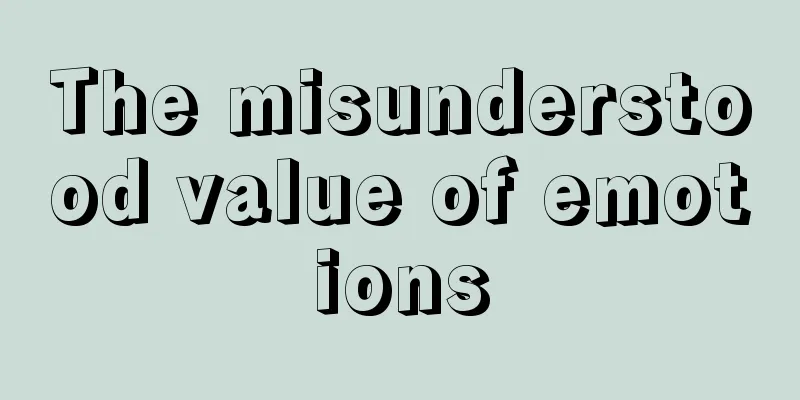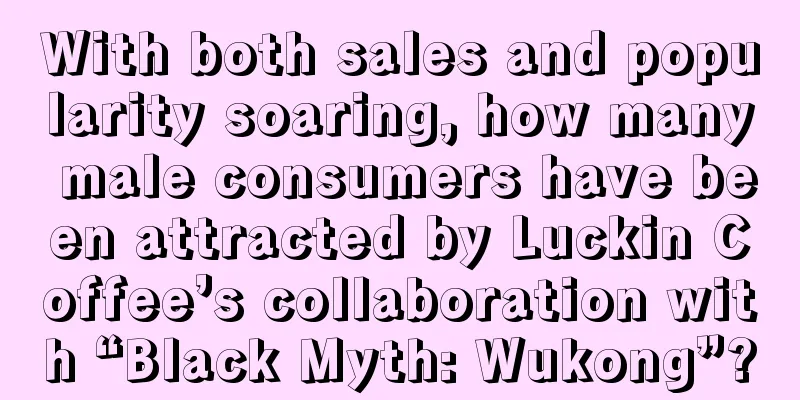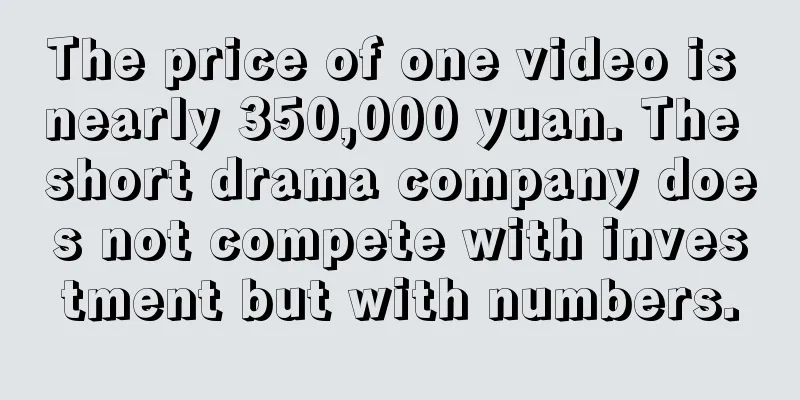Don’t let sales ruin the brand you worked so hard to build!
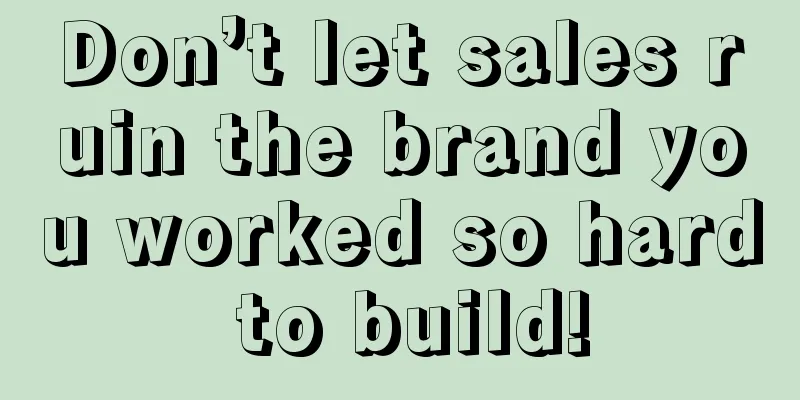
Many people who build brands, whether on Taobao or Douyin, can easily increase their GMV in the short term, but many people don’t know what to do next. The biggest problem for these brands is the lack of brand consensus on the top-level architecture. Therefore, throughout the entire process, many Chinese entrepreneurs only have to deal with the issue of selling, selling, and selling; finding hot products, finding hot products, and finding hot products. This leads to consumers' unclear perception of brands. After a long period of market competition, consumers will form a certain brand order. For example, LV and Gucci are luxury goods, Li Ning is a national trend, Huawei is a national brand, MINISO is a lifestyle brand, HEYTEA and BAWANG CHAIJI are new-style tea drinks, and FASHION is an oriental aesthetic makeup brand. In a larger brand order, an ecosystem is formed. The uniqueness of brands conveyed by different brands forms a consensus on the consumer side. This sense of order guides the public to make different consumption decisions and also brings about differentiated identity recognition. The unique tonality determines what unique impression the brand leaves on consumers (especially the first impression). I call it "brand tone." Brand tone is a comprehensive concept. It creates a unique image for the brand and helps everyone know who you are. Therefore, brand tone solves the problem of "what kind of brand image should be presented to the public":
For brands, successfully setting the tone at the mass consumer end means occupying a place in the brand ecosystem. Brand tone is not obvious and is often hidden in specific brand performance. The core is market value, and the extension includes corporate values, brand stories, product stories, corporate culture, communication symbols, founder image, brand public speech and many other levels. It is a complete sustainable brand narrative system, a collection and integration of brand experience, personality and relationships: to ensure that communication conveys a strong and consistent voice and feeling. This sustainable narrative system must be considered from the moment the brand is born. It requires understanding strategy, users, products and markets, and based on this, building a complete long-term narrative system for the company for business development and user trust. This narrative system: To C, you can define consumer culture, guide users' purchasing behavior, and gain user loyalty; To B, we can lead changes in business models, activate demand, and shape the business ecosystem. Next, let’s talk about the strategies and methods of brand setting from the perspective of content marketing. 1. Uncover the cultural codes of brandsDouglas Holt, a professor at Harvard Business School, said in his book Cultural Strategy: Consumers flock to brands that embody their ideals because these brands help them express their personal wishes. The most successful of these consumer brands will become iconic brands, join the ranks of cultural icons, and become the unanimous expression of some consumers in society who advocate unique values. Douglas Holt further explained that culture is about innovation, and every time there is a cultural innovation, new brands can seize opportunities from old brands. He called this process a cultural innovation strategy and gave three main elements: Brand Culture Innovation Model
Returning to the current situation of the Chinese market, focusing on cultural innovation, from the rise of "national tide" and "national style" in recent years, it can be seen that in order to win Chinese consumers, it is crucial to tell a good "Chinese brand story". Take Hua Xizi as an example. If you were asked to describe Hua Xizi, what would you think of? Oriental makeup, flower-based makeup, traditional Chinese style, carved flowers... In Hua Xizi's public introduction, we can see that Hua Xizi positions itself as an oriental cosmetics brand. From the very beginning of the brand's establishment, it has insisted on creating products and content with "Hua Xizi" characteristics under the oriental aesthetic system. For example: Huaxizi's packaging design, product technology, etc., inherit the oriental culture;
If we apply this model to do an analysis, we can see the following figure: Huaxizi has beautifully completed the brand building from new concept to brand promise to cultural code in one go. Huaxizi Brand Culture Innovation Model Huaxizi, which focuses on "Oriental Makeup", is not just an "art company, design company" through oral expression and superficial thinking. It explores oriental aesthetics with creators from different fields, pays tribute to oriental learning, and awakens everyone's sensitivity. From the conscious to the subconscious, and then to the collective unconscious, it is actually through the deep excavation of various cultures to find the roots of culture, plant the tree of experience, and bear the fruit of aesthetics. Thus, a new style of oriental cosmetics and culture is brought to the world, and finally a global brand and symbol is created - the original spirit, national brand and responsibility that have always been deeply imprinted in the core DNA of Huaxizi. In addition to Huaxizi, there are countless examples of developing or reactivating a brand through cultural innovation, such as Coca-Cola, Apple, Nike, Disney... Looking closer at Chinese brands, there are also Li Ning, Pop Mart, Guanxia, NEIWAI, etc. We found that once a brand is endowed with cultural power, it will establish a strong and lasting emotional bond among consumers. Judging from the tip of the iceberg, using a brand concept that highly resonates with consumers and empathizing with them is the biggest brand asset for a startup and will be the norm in the future. 2. Shaping brand temperamentTemperament is a psychological term first proposed by the ancient Roman doctor Galen. It is one of the characteristics of personality psychology and is more often used to describe people. So why does brand temperament emerge? Trust in traditional brands often comes from the "outside", that is, by seizing consumers' minds through slogan-like advertising, education, and design of credentials. It is a "land grabbing" movement from the outside to the inside. However, as the consumer market matures, trust in consumer brands at this stage often comes from exploring "inward". Such brands are like living people, with their own real and independent values, character attitudes, and spiritual pursuits. Young people like them because they are infected by their true personality traits. This brand temperament is the product of a series of summations, such as image design, product design, personality design, internal corporate culture, founder, etc., and is composed of a series of elements. So, what is brand temperament? Brand temperament = the connotation, life or soul of the brand, also known as endogenous force and static sales force. At the brand level, it covers:
Next, I would like to analyze Huaxizi’s product system, visual system, design system, communication system and content system through the roots and branches of a tree to see how Huaxizi shapes its brand temperament? Huaxizi brand temperament tree Isn’t it intuitive? Based on the research and exploration of oriental aesthetics, Huaxizi chose to use cosmetics as a carrier and culture as a medium under the oriental aesthetic system to successfully implant the brand characteristics of oriental aesthetics into the minds of consumers. There are also brands we are familiar with, such as Nike (trustworthy, hard work, sports), Disney (interesting, entertainment, IP), Coco Tree Coconut Juice (ghostly, dramatic, earthy), and Lao Xiang Ji (chicken feet, clucking, acting). Corresponding to the content communication output, the entire system including brand new product research and development, packaging design, Tmall detail page, new media content, posters, advertising content, etc. is coordinated by a thread. If you look at all the copywriting that Apple uses for external communication, it’s all very “Apple”. This is the language feeling that Apple wants to convey to consumers, and its unique "minimalist" expression. Because its characteristics are distinctive enough, it has been imitated by many brands, and has also been imitated by Weilong. For brands with limited funds, the ultimate goal of shaping brand temperament is to make users feel that the brand is a real person, showing its interesting soul, communicating deeply with users, and thus establishing relationships and preferences with the brand. When we have cultivated our internal strength, we will have a complete brand with products, tone, consensus, and user traffic. At this point, we can do popular word-of-mouth marketing. In the process of reaching consumers from products again and again, consumers will have a sense of the brand, and the brand will be endowed with brand power. Therefore, I would like to give you a thought here. From the perspective of brand tone and brand temperament, how to express your brand value in a concrete and consistent manner? Please fill it out. This article is excerpted from Chapter 2 of "Breaking Word of Mouth": Brand Contentization: How to create great content at different stages of a brand? |
>>: 5 tracks on Xiaohongshu where it is difficult to make money even if you have 10,000 followers
Recommend
Is snack discount store a good business?
Starting from the current situation of the booming...
Which Shopee site is better? How to choose as a beginner?
Shopee's development in recent years is obviou...
Do you understand the "people, goods, and venue" model? Data analysis can be used in most scenarios!
Many people have heard of the "people, goods,...
How long does it take for the goods from Korea Gmarket to arrive? How long does it take for direct shipping to China?
With the rise of global cross-border e-commerce, m...
Discussing the 4Ps of Marketing丨Products (Version 2.0)
Marketing 4P refers to Product/Price/Place/Promoti...
How to process returns on Amazon in the United States? What is the process?
Nowadays, many netizens like to shop on the Amazon...
How can I open multiple stores in Wish? How to operate them?
Wish is also a long-established cross-border e-com...
Can Amazon personal stores place orders? How can I place orders quickly?
The development speed of the e-commerce industry i...
Can Amazon Prime exclusive discounts and coupons be used interchangeably?
Amazon often launches events. In addition to the e...
How often does Amazon generate organic traffic? What influences Amazon traffic?
Amazon merchants all know the importance of store ...
Where can I find Amazon's off-site traffic? How can Amazon get more traffic?
Traffic is very important for stores. After all, s...
How to apply for an international virtual credit card? What should I pay attention to when applying?
As the pace of globalization accelerates, cross-bo...
After working as a food delivery agent on JD.com for half a month, Meituan’s orders exploded
It has been two weeks since JD Takeout was launche...
How to visualize selling points?
With so many products today, how can we visualize ...
DeepSeek per person, from top to bottom
From lawyers, journalists to real estate agents, a...

